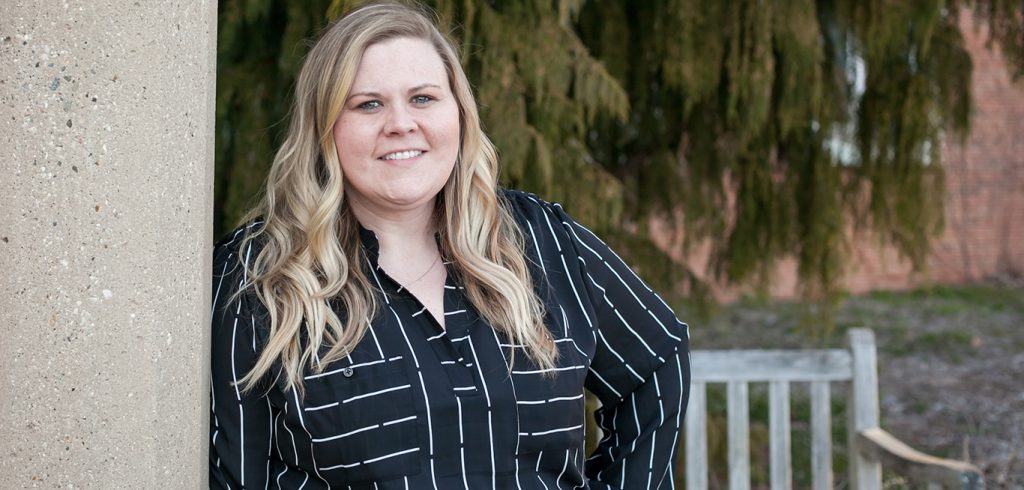“I’ve always loved biology. I was that kid outside collecting bugs and looking at the trees,” said biological sciences doctoral candidate Chelsea Butcher. “It’s totally cliché and nerdy, but it was totally me.”
When Butcher takes her seat among her fellow doctoral candidates on Keating Terrace at commencement, it will be the conclusion of long journey—one that veered from otter conservation in Michigan to rooftop pollination in New York City.
And it all happened because of a chance encounter on the other side of the world.
Butcher, a native of Michigan, was in New Zealand for a conference in 2011, presenting research on green roofs she had conducted as part of her master’s degree in conservation biology at Central Michigan University. Fordham associate biology professor J. Alan Clark, Ph.D., who was there to study penguins at the time, told her about Fordham’s program at the Graduate School of Arts and Sciences. Butcher was skeptical about leaving her family but booked a flight to New York anyway.
“I came out to visit and loved it. I loved the city. I loved the colorfulness of the Bronx. I really loved the Calder Center,” she said.
Her dissertation on pollen dispersal in diverse urban habitats looks at the ways that tomatoes and amaranths reproduce even when they’re stuck on the equivalent of urban islands.
Within four sites—the green roofs on the Rose Hill campus parking garage and the Javits Center, and ground sites at the Queens Zoo and Fordham’s Louis Calder Center Biological Field Station in Armonk, New York—Butcher tracked the movement of pollen by identifying unique molecular markers in the parent plants, and tracking these markers in the seeds.
“I matched the seeds to their mom. I matched them to their dad. And then I could tell where mom was and where dad was, and then calculate the distance. It’s just like Maury Povich,” she said, laughing.
Butcher said there is a dearth of research on pollen dispersal in roof habitats.
“Pollen dispersal is the most important component of plant gene flow. Gene flow is essential because it can maintain or increase genetic diversity within a population and thus increase a population’s capacity to adapt, and in an urban environment, it’s really important because humans are constantly changing things,” she said.
Butcher said she’ll miss the Calder Center, where she briefly resided.
“Other biological field stations may be bigger and better funded, but Calder has a history that’s so interesting,” she said of the field station—a former estate anchored by a 13,000-square-foot, 27-room stone mansion built in the early 1900s.
Butcher, who served as the Biology Graduate Student Association president for several years and had a Clare Boothe Luce fellowship for two years, also taught at the New York Botanical Garden’s Everett Children’s Adventure Garden during her time at Fordham.
That experience revealed to her a passion for teaching science informally, and going forward, she’s exploring a wide array of potential positions, including teaching at a university.
“I’m casting my net really wide for a job now. I think I’ll know what I want to do when I see it.”


